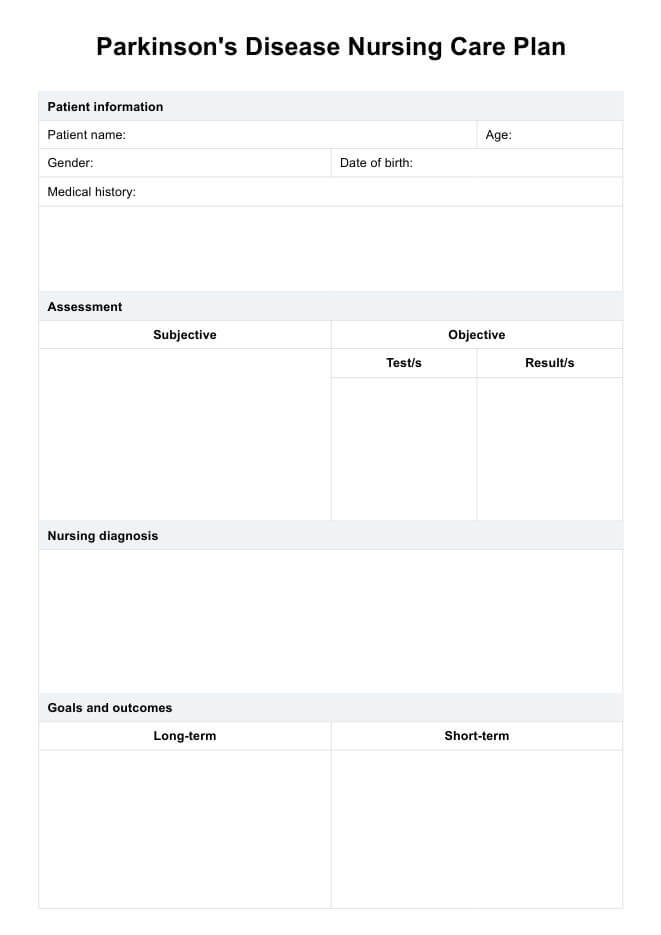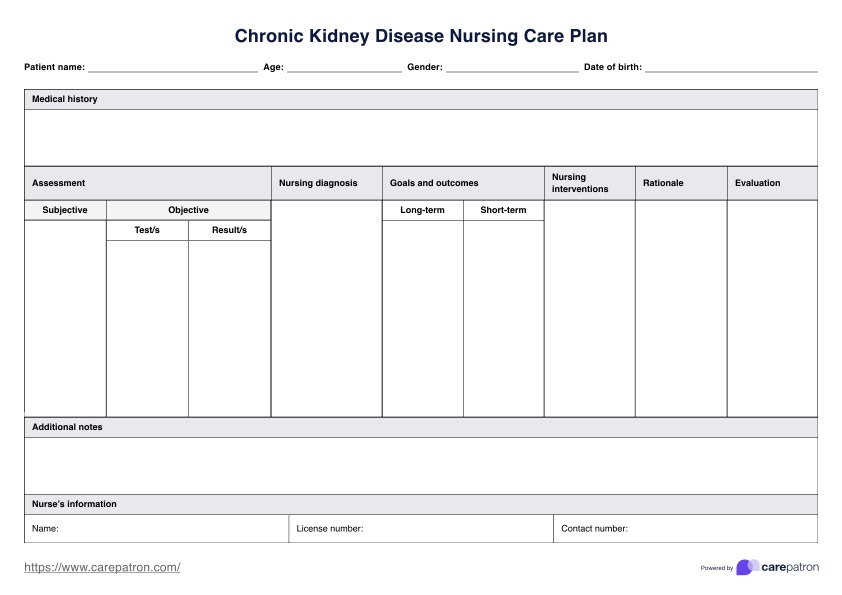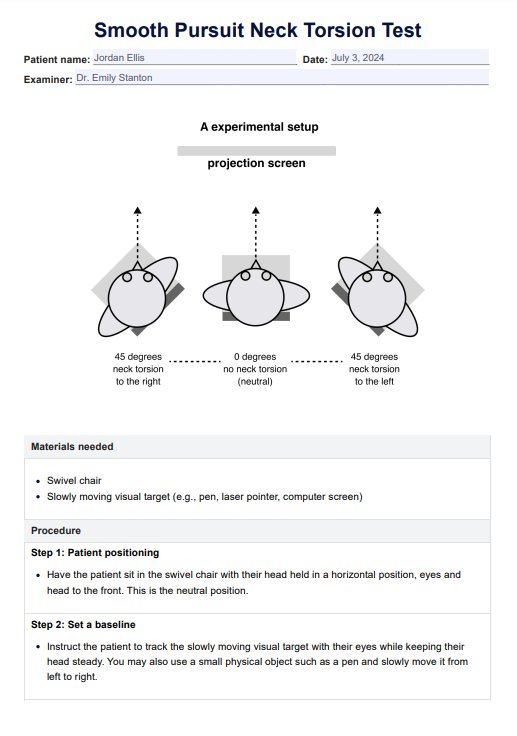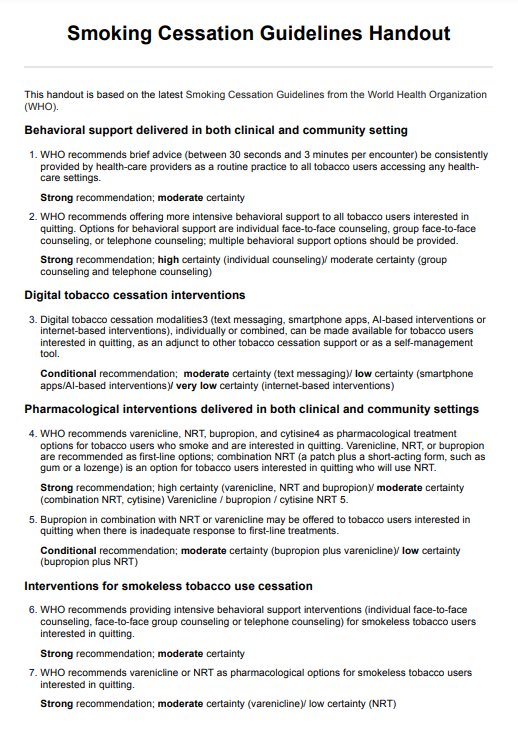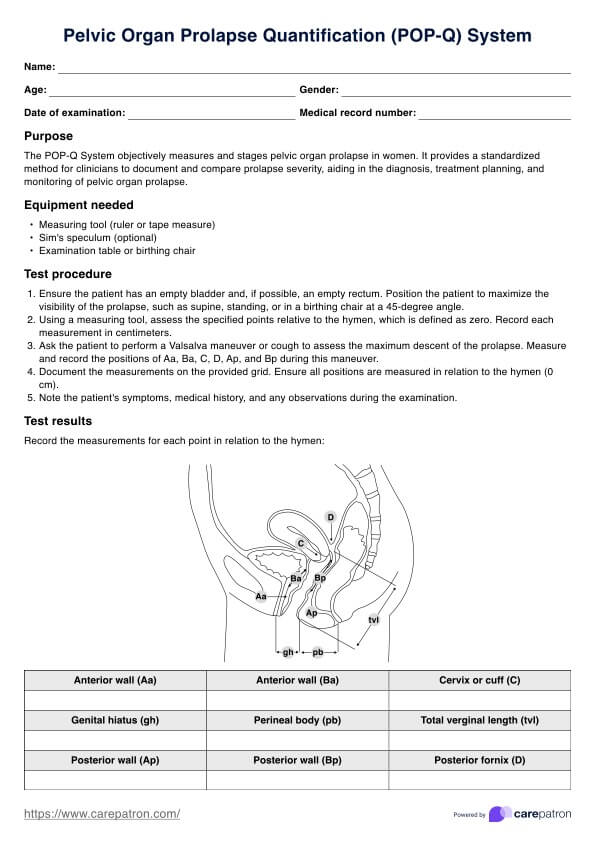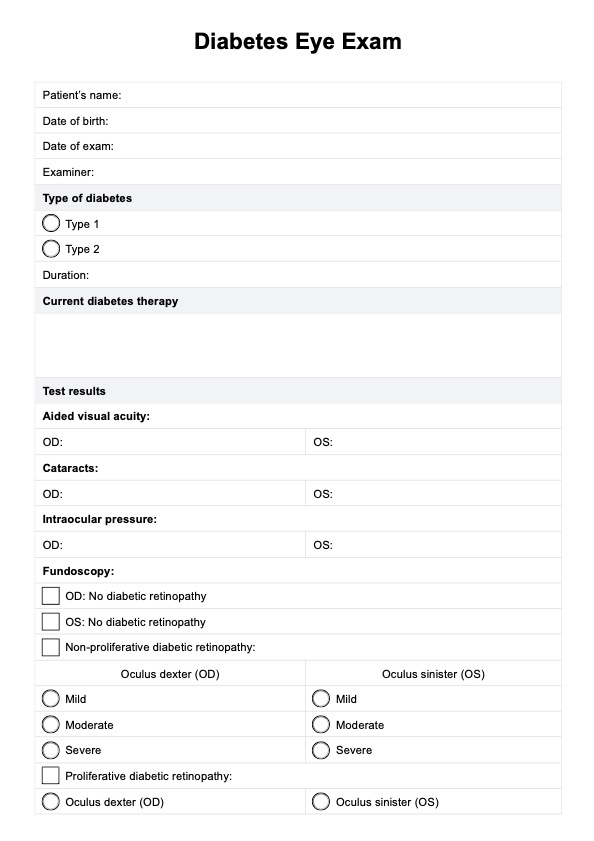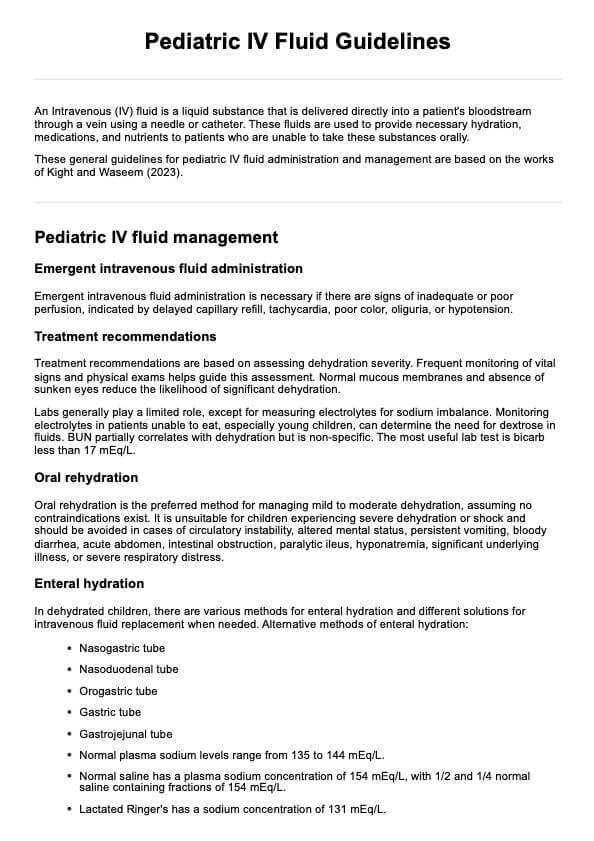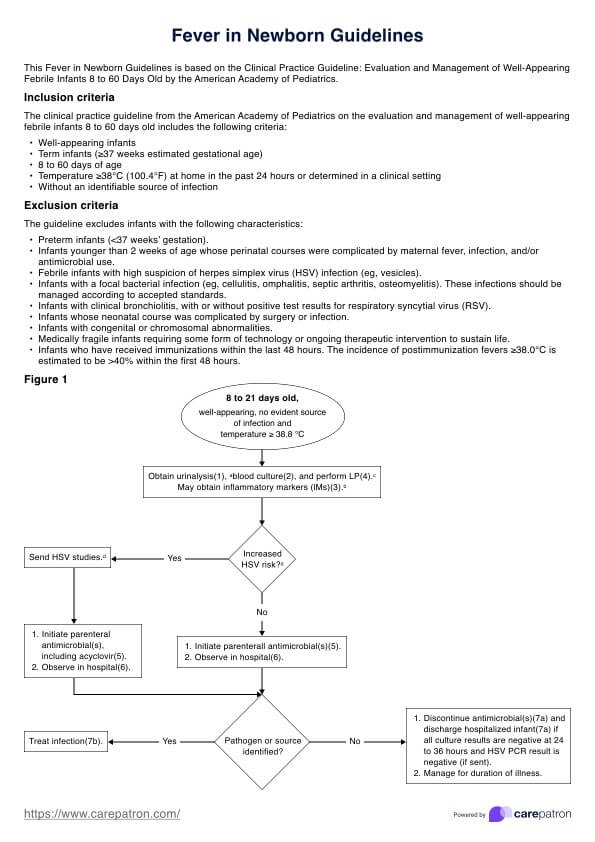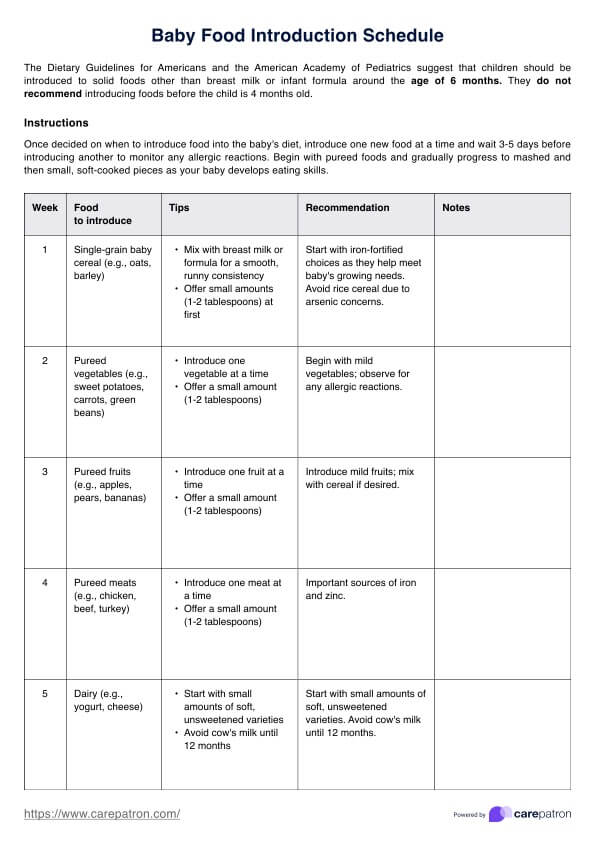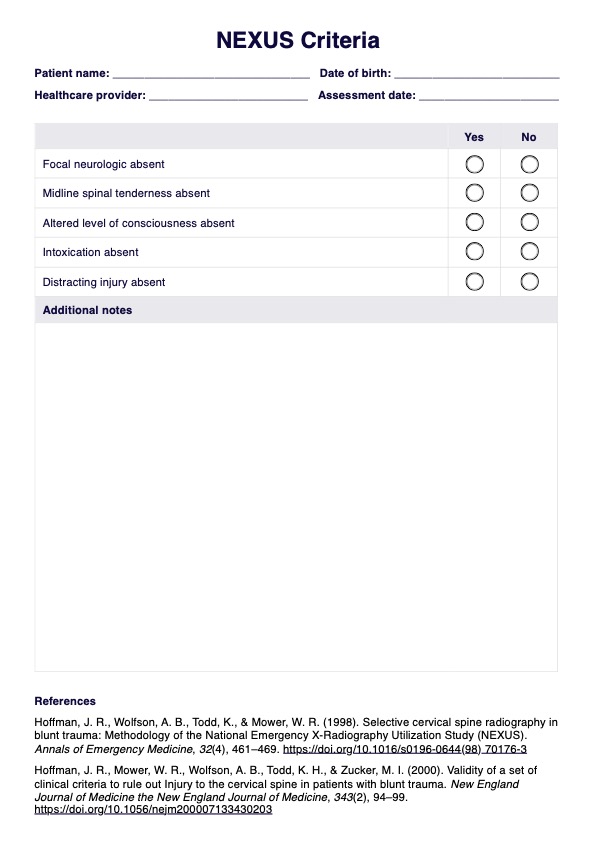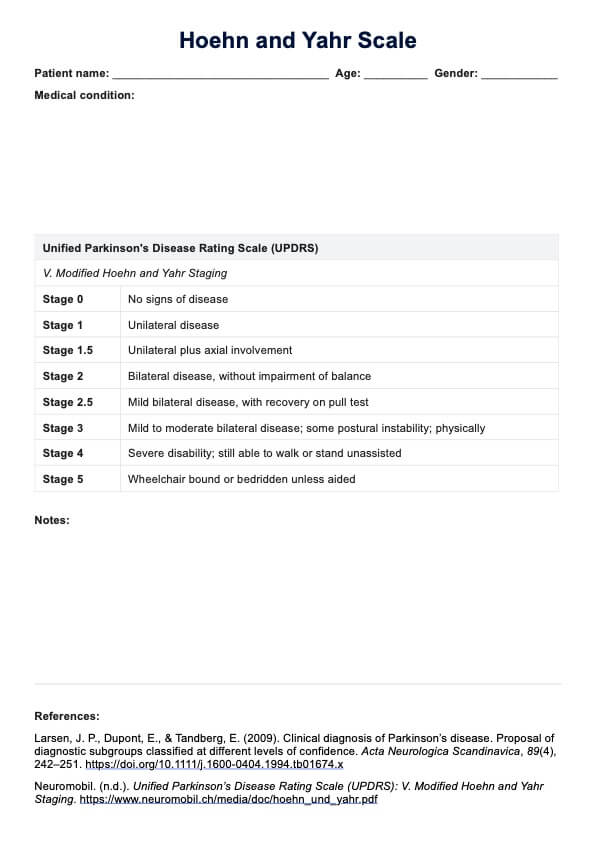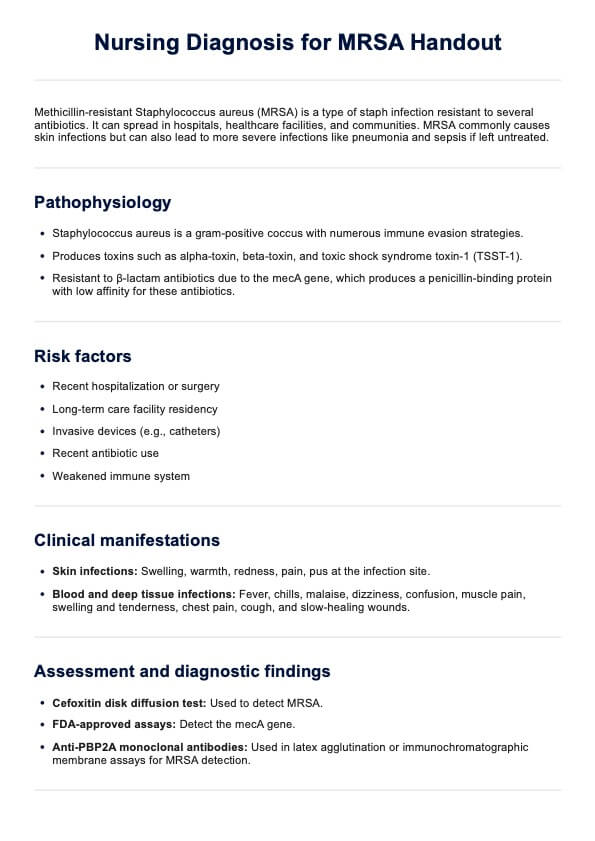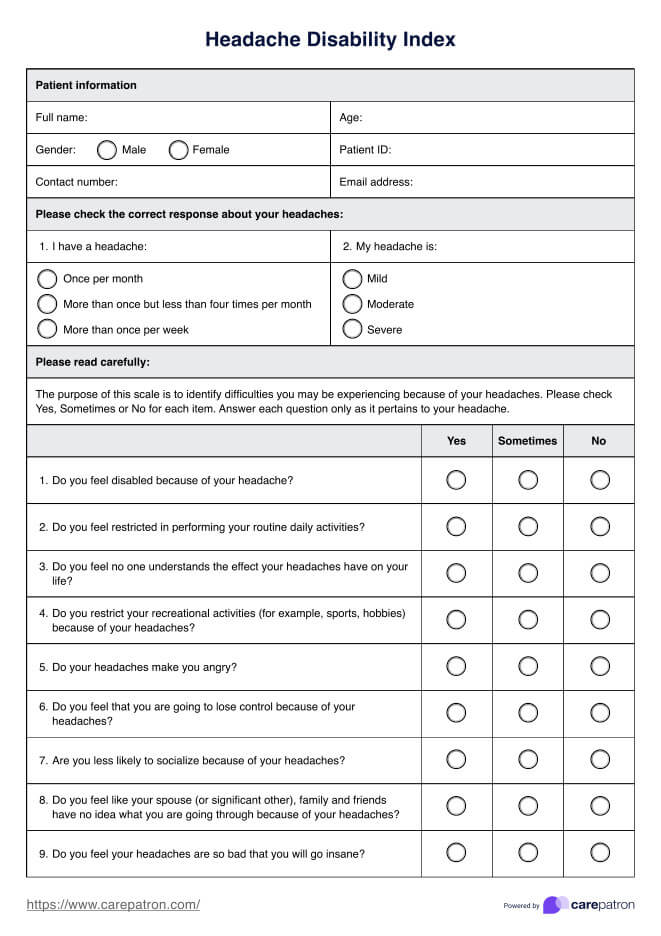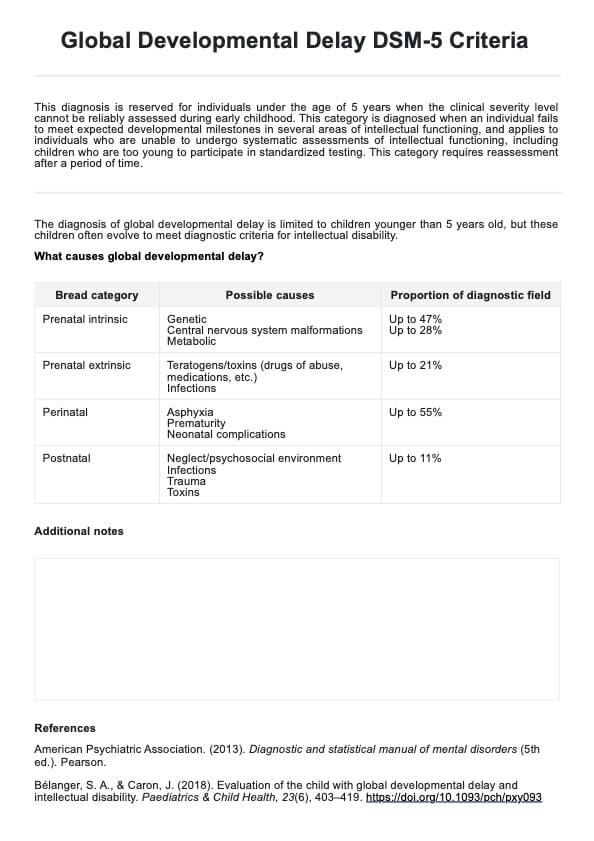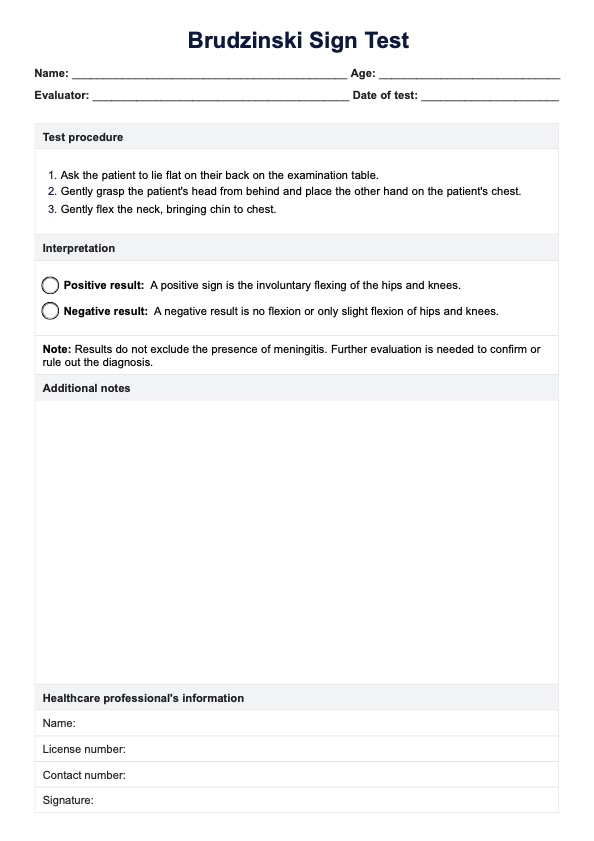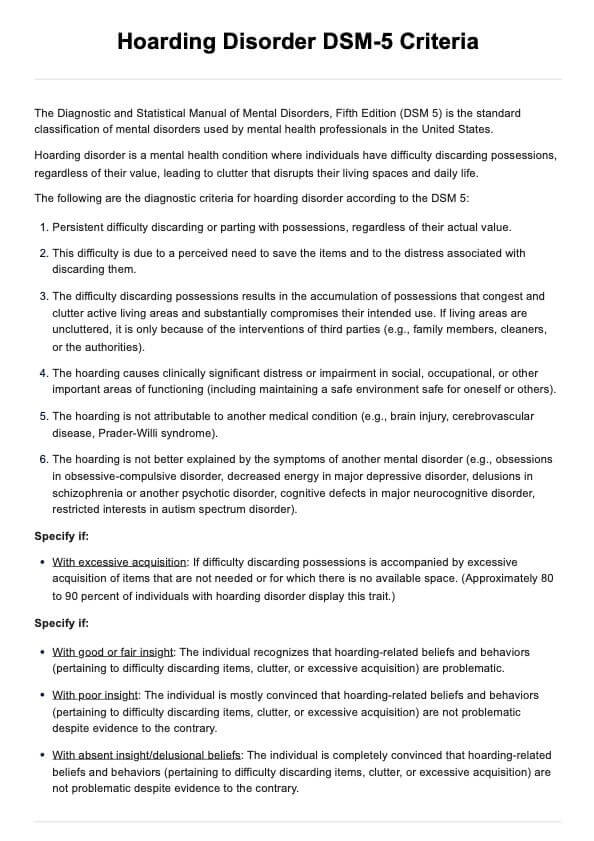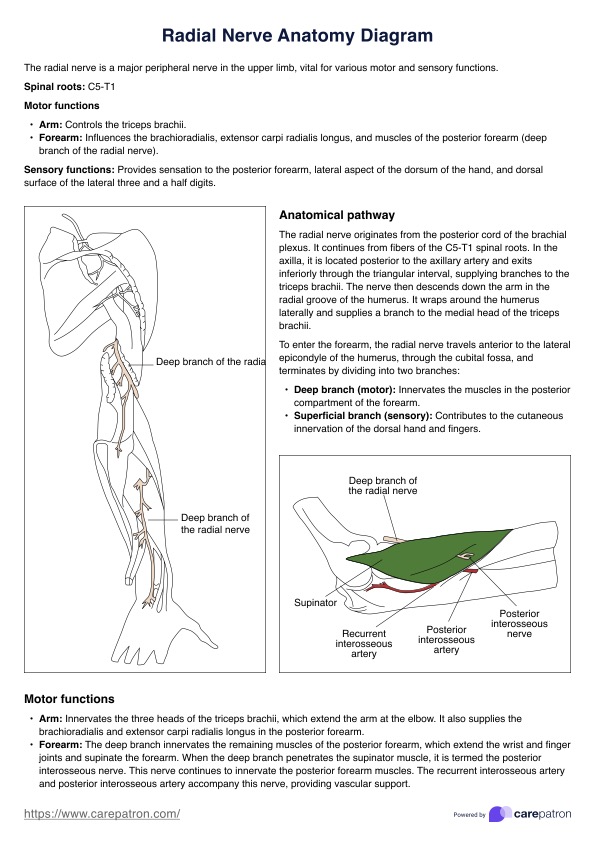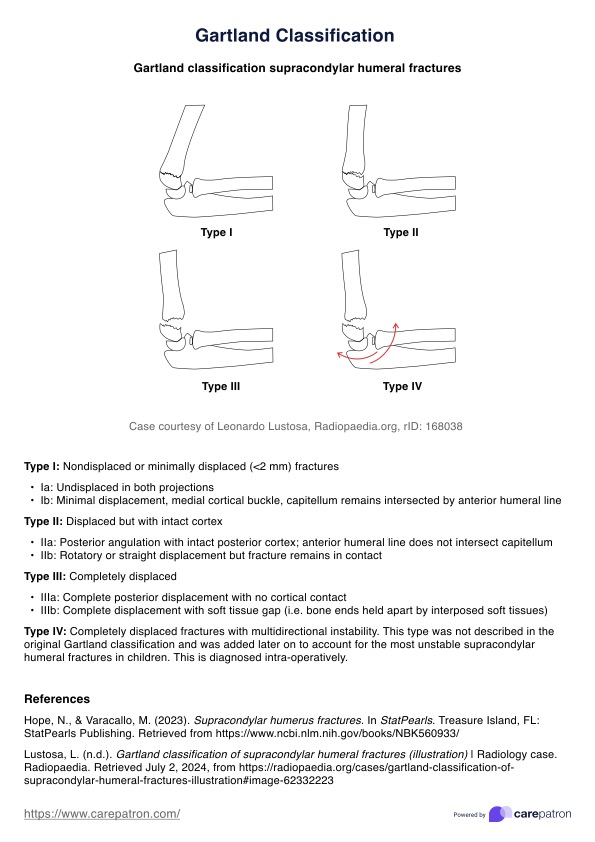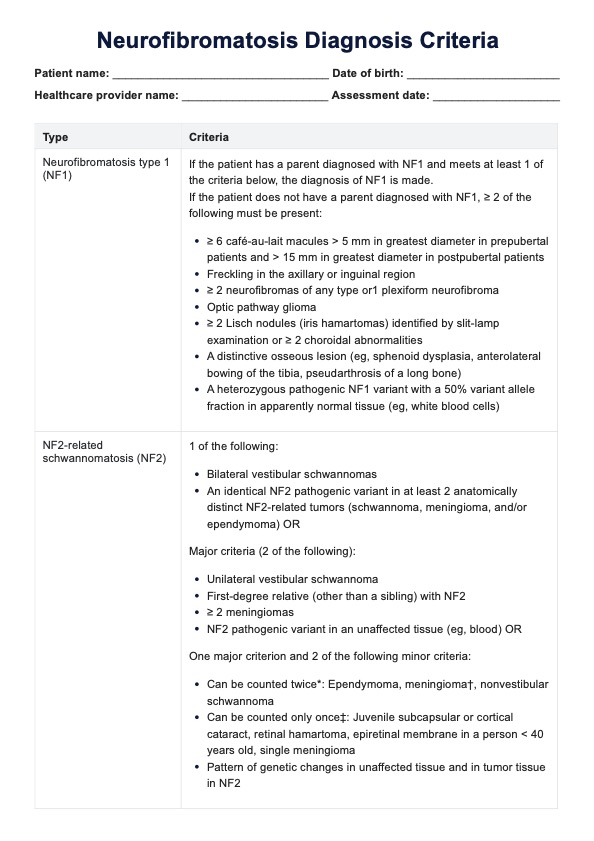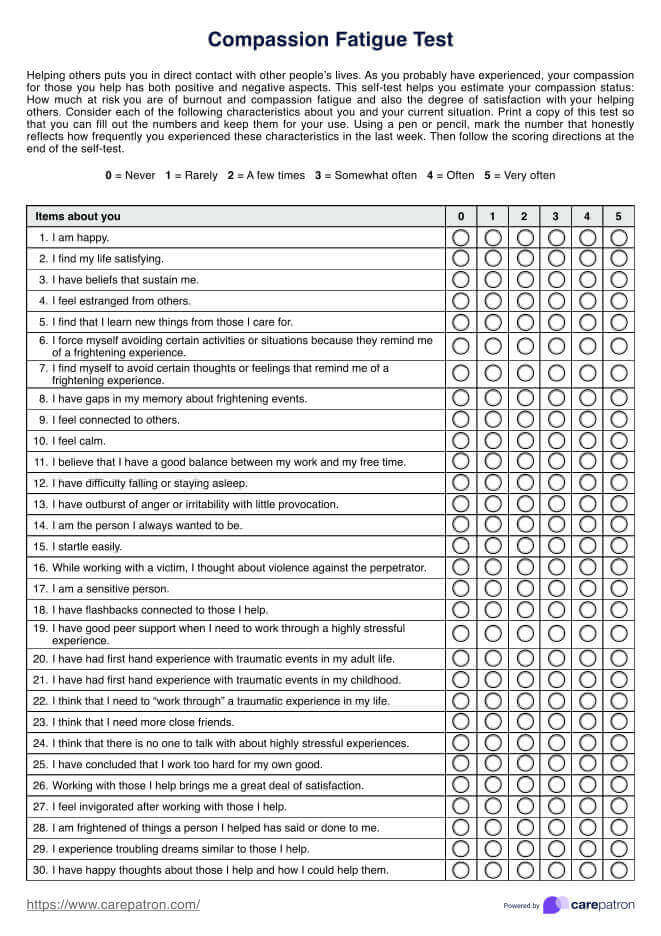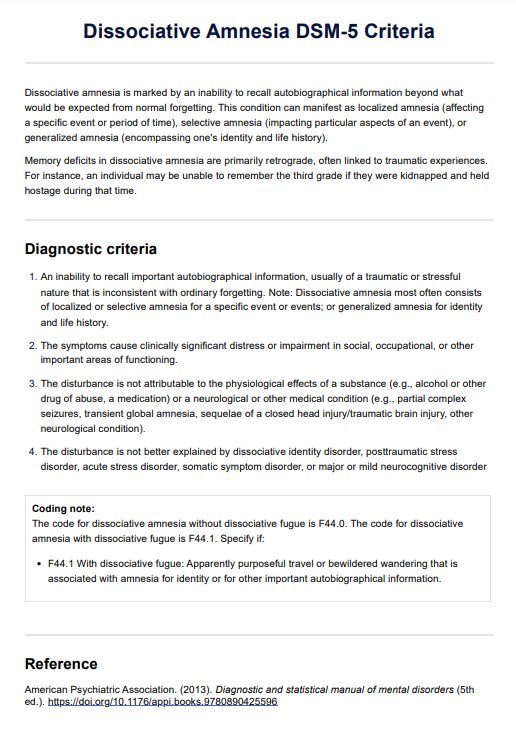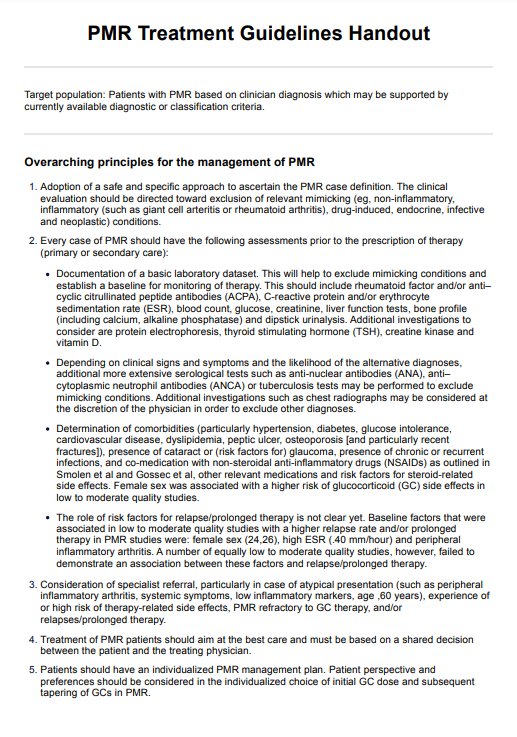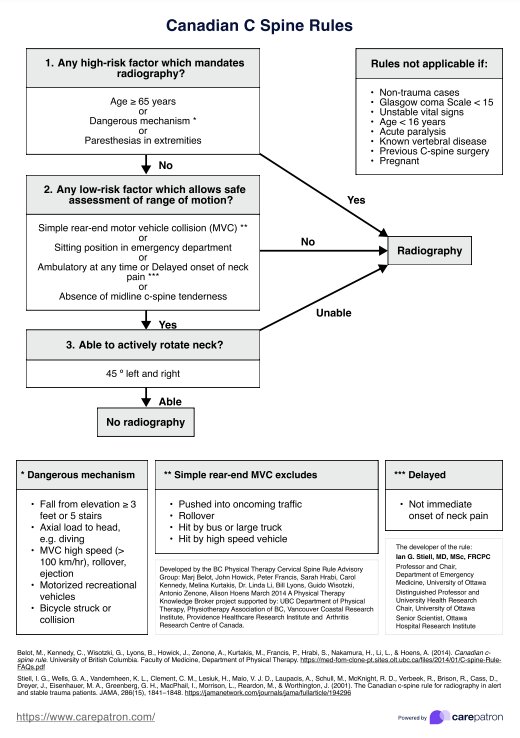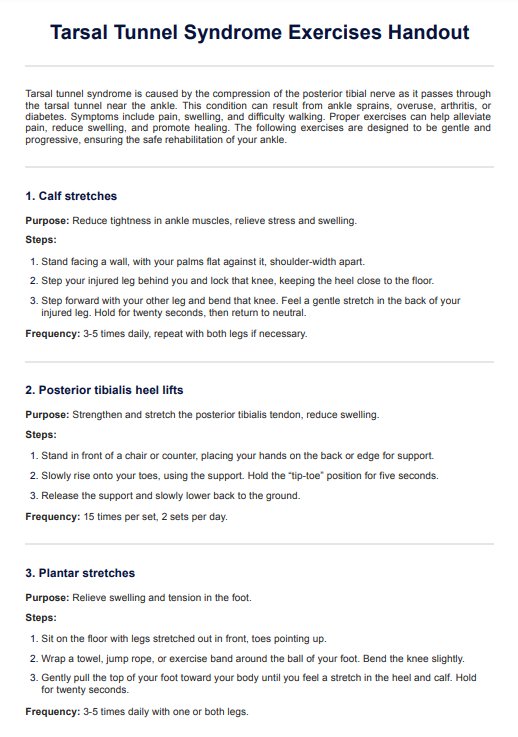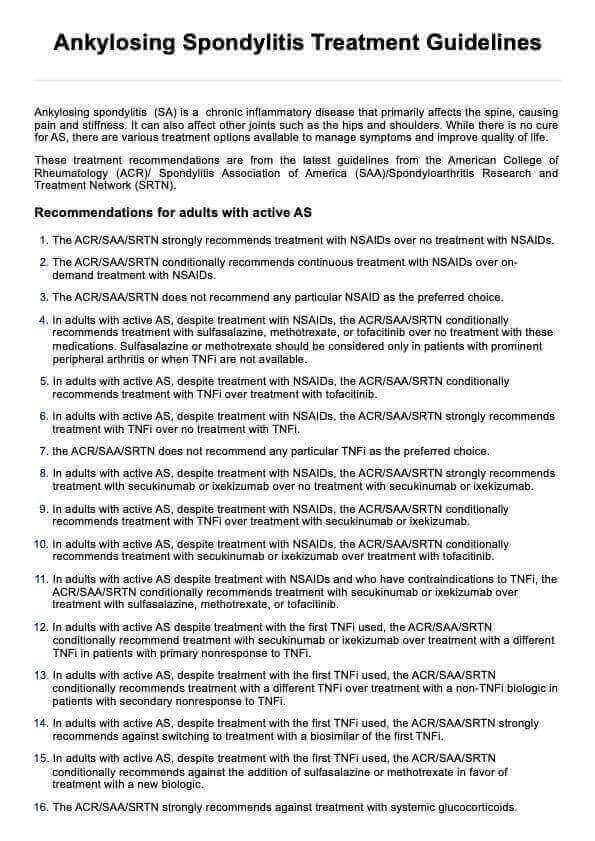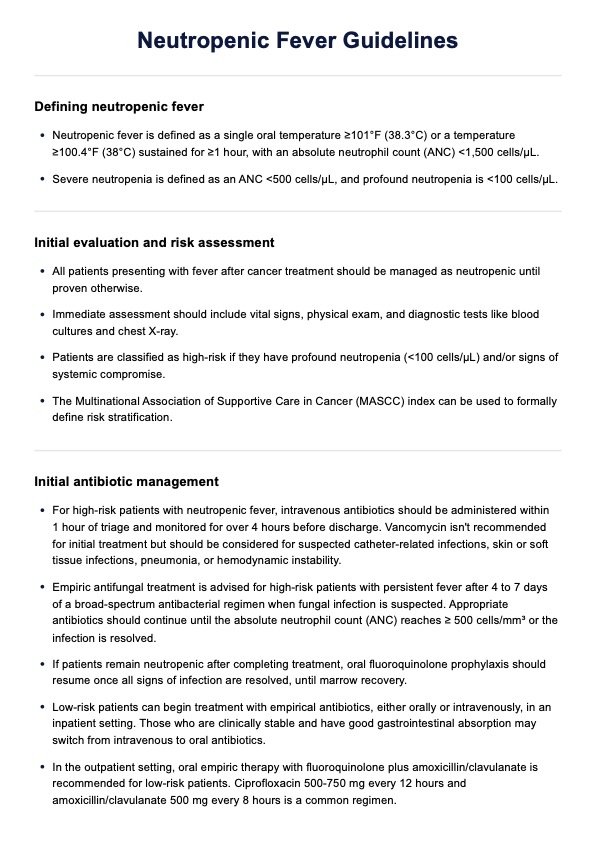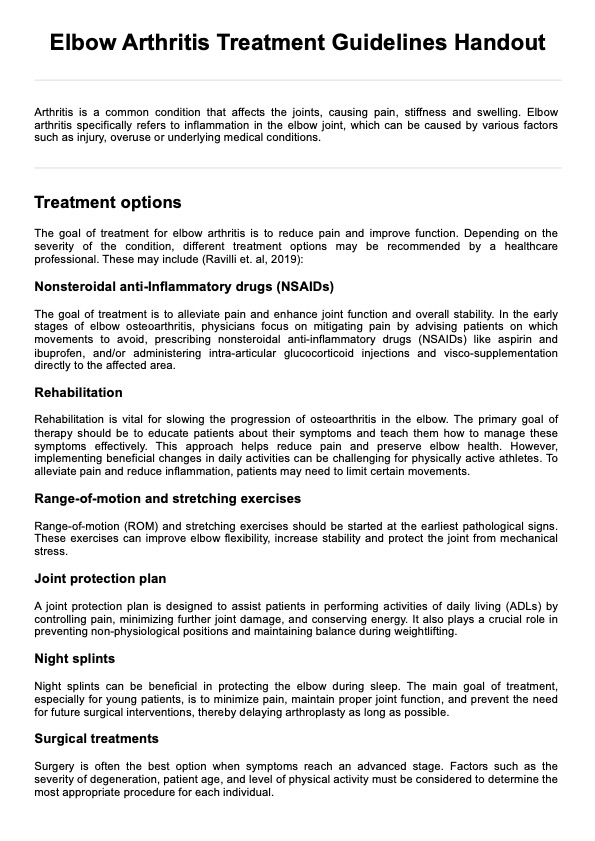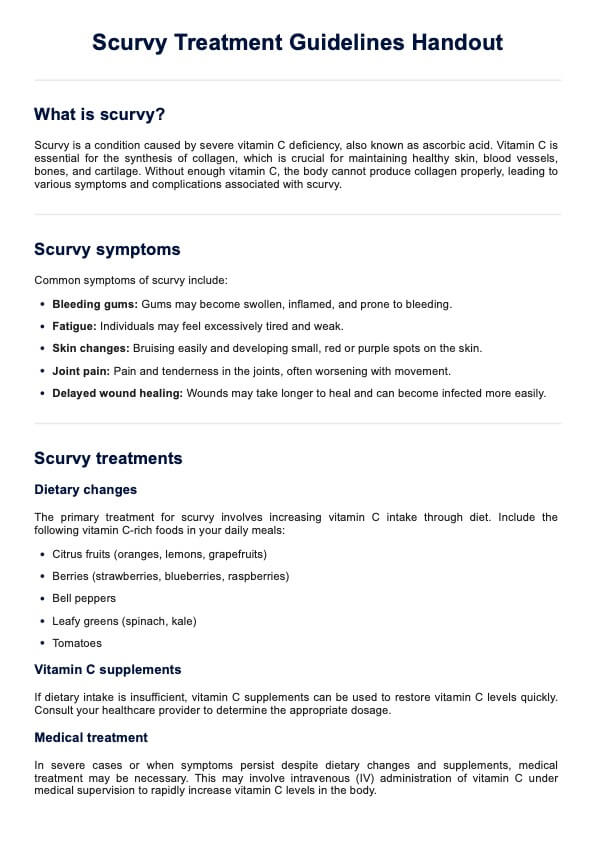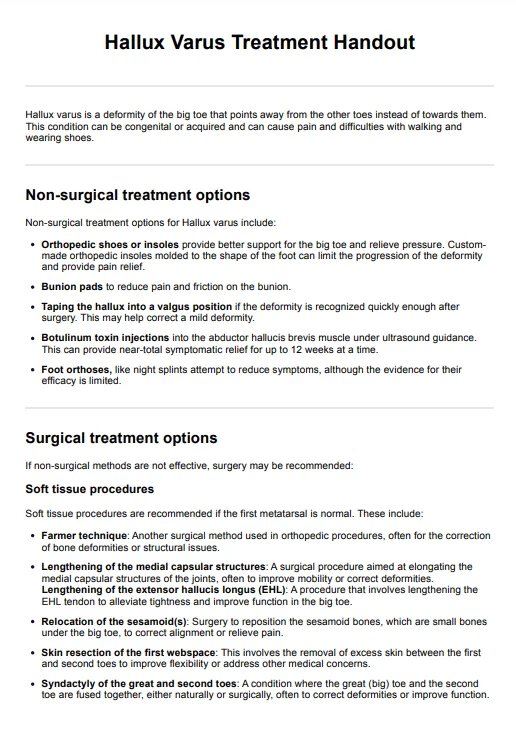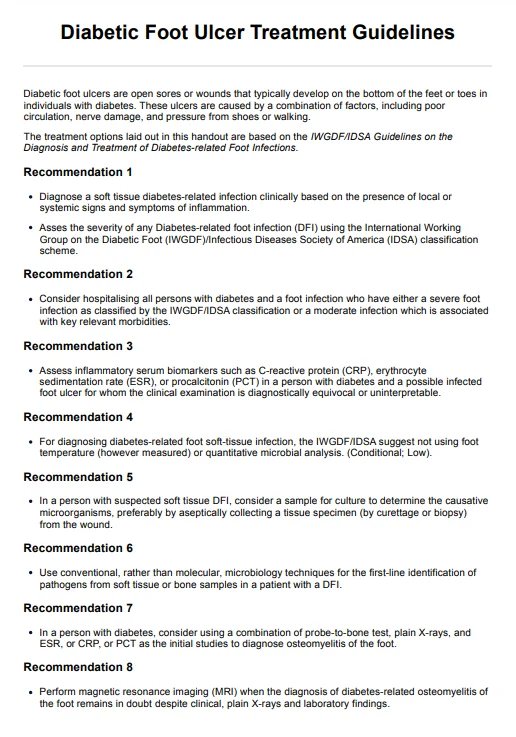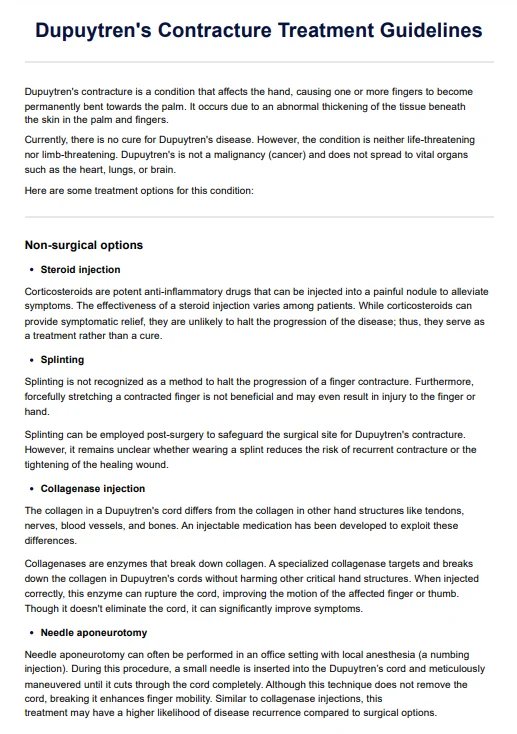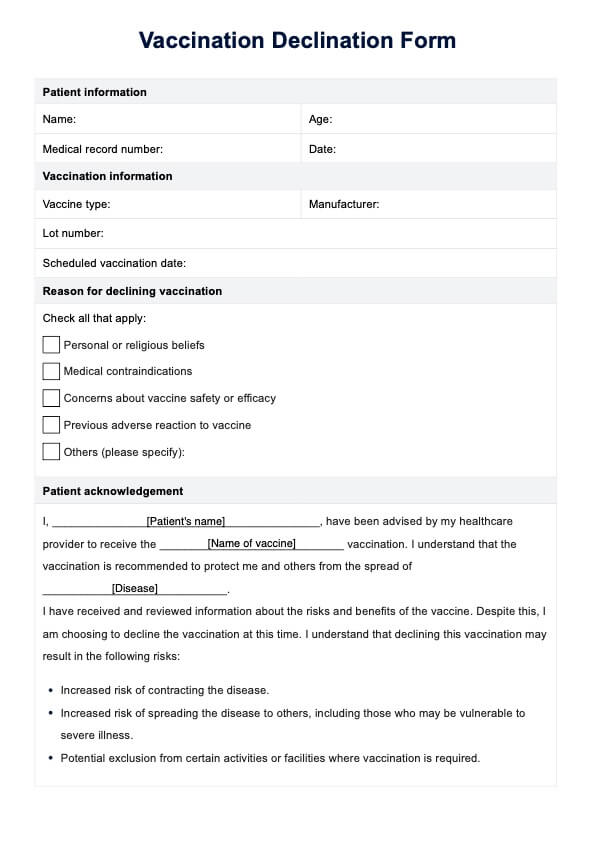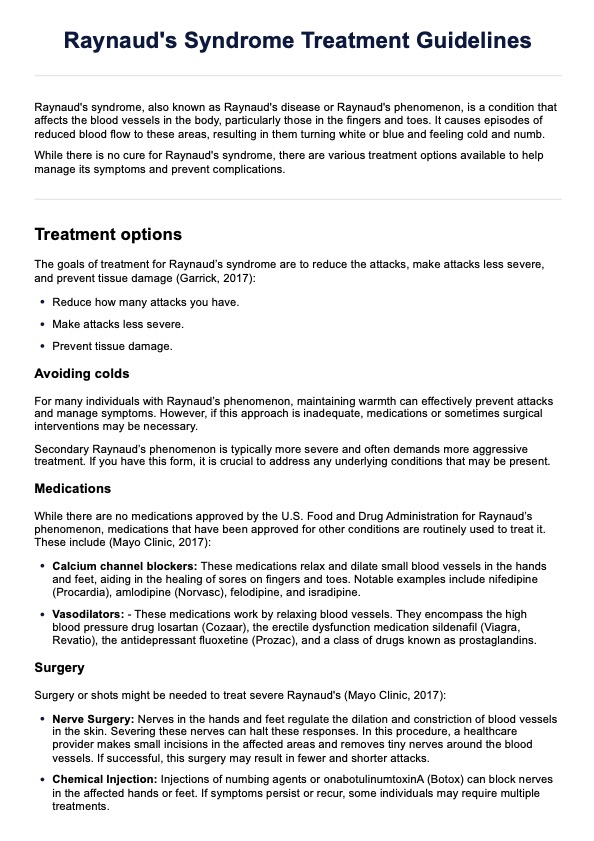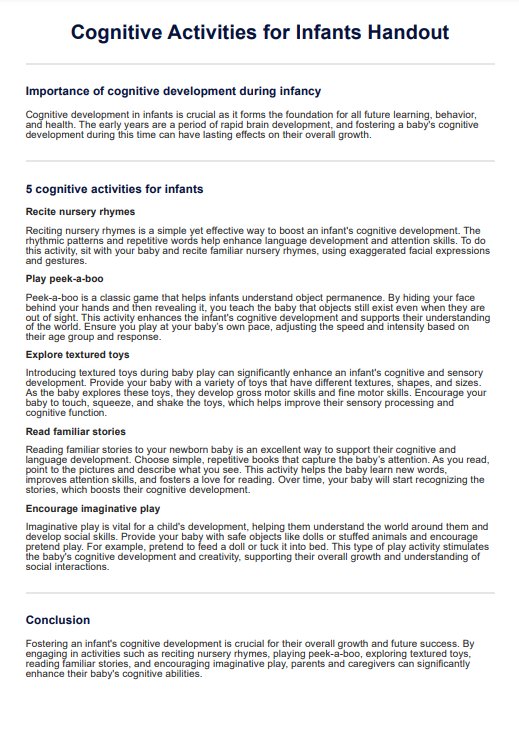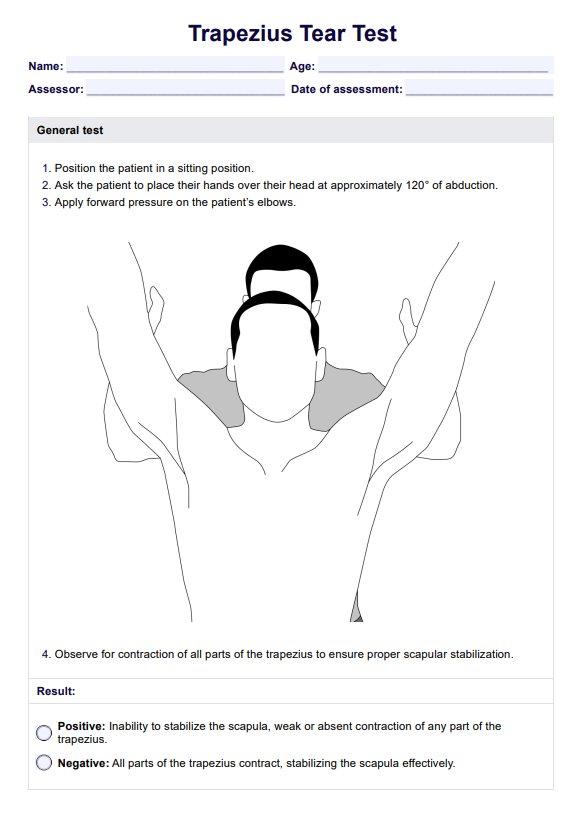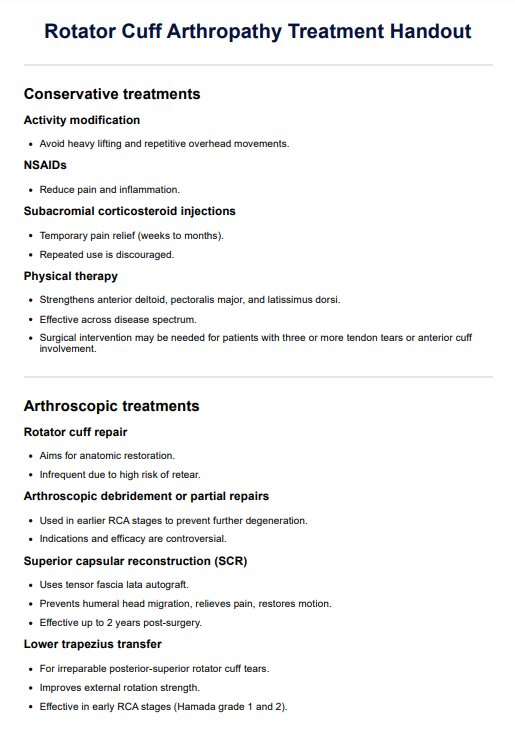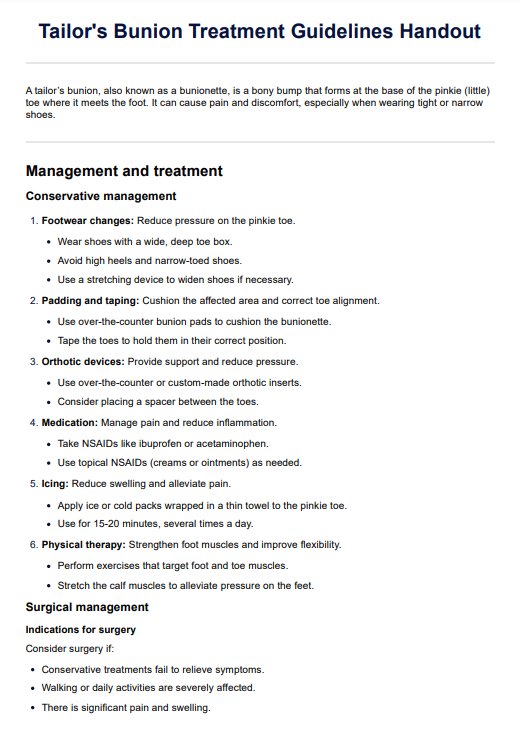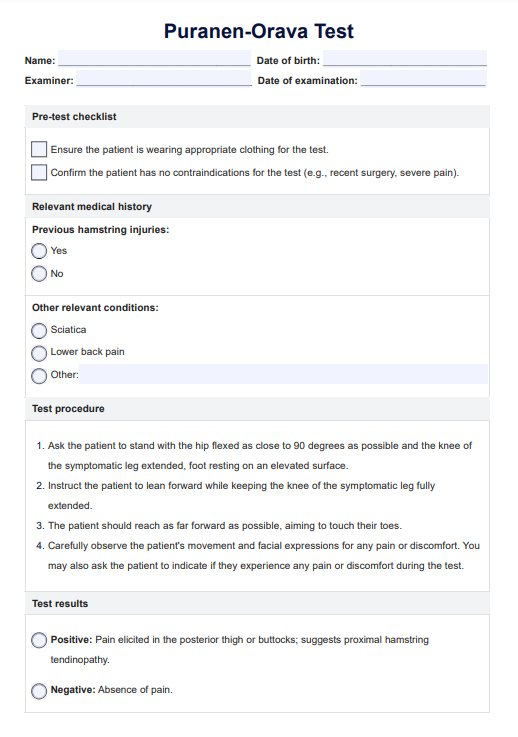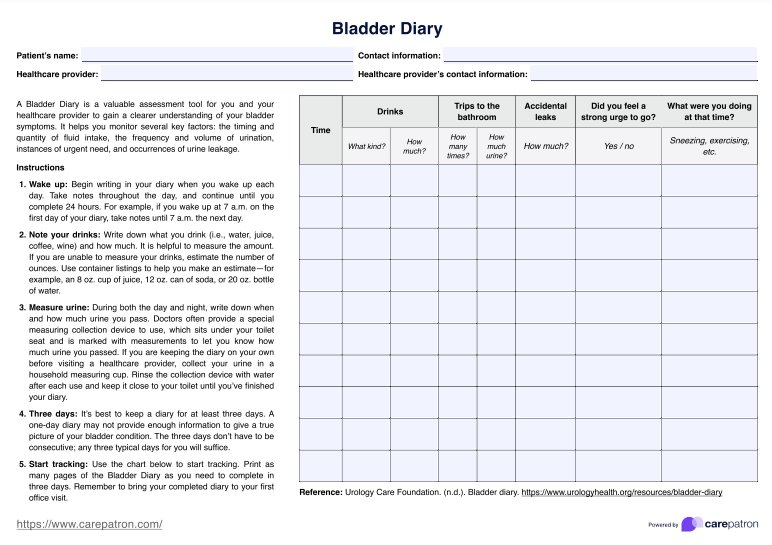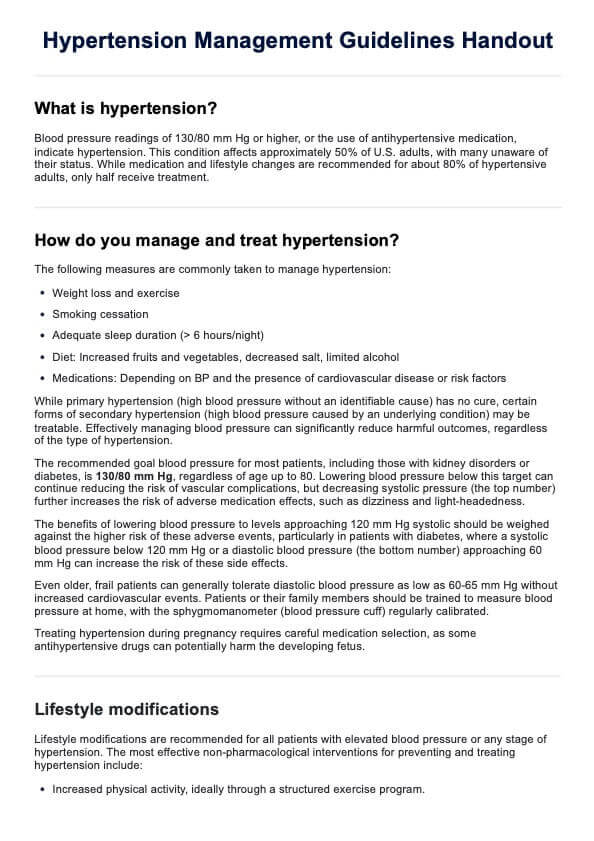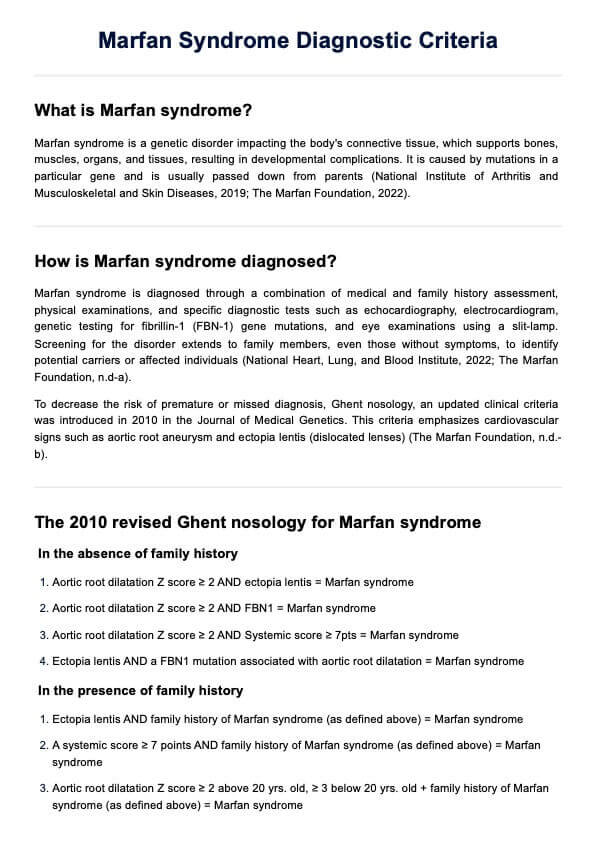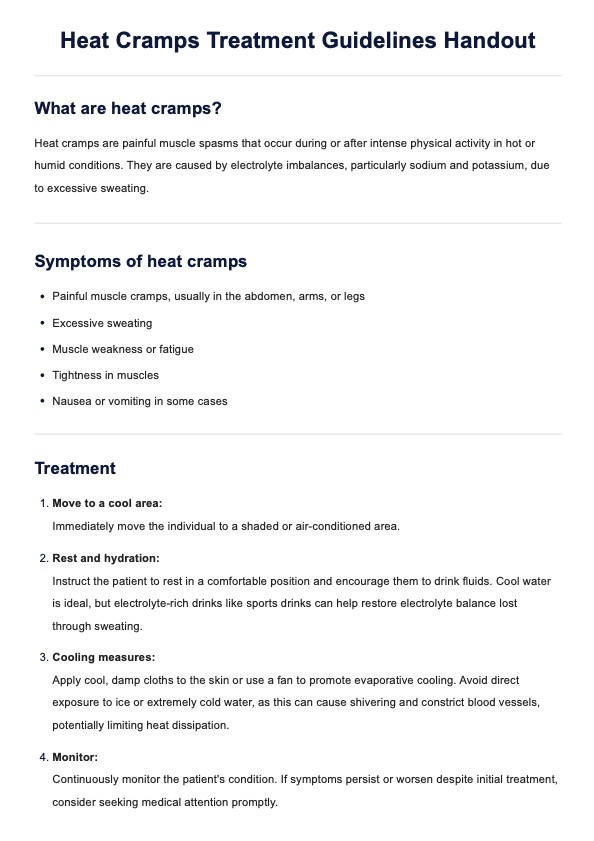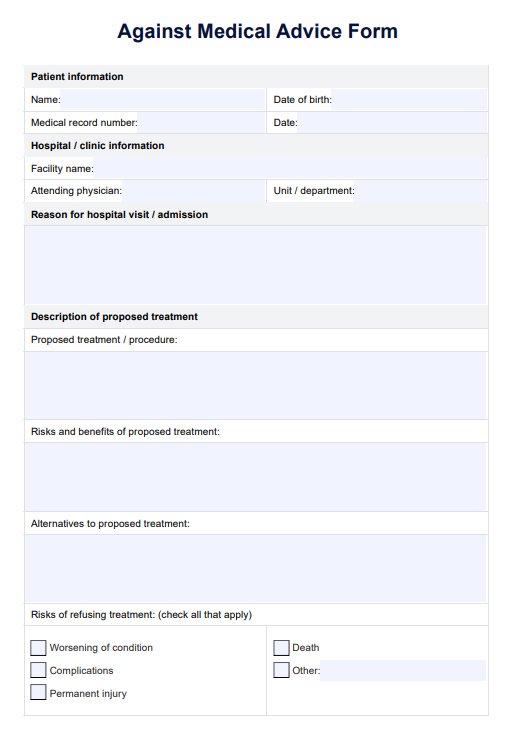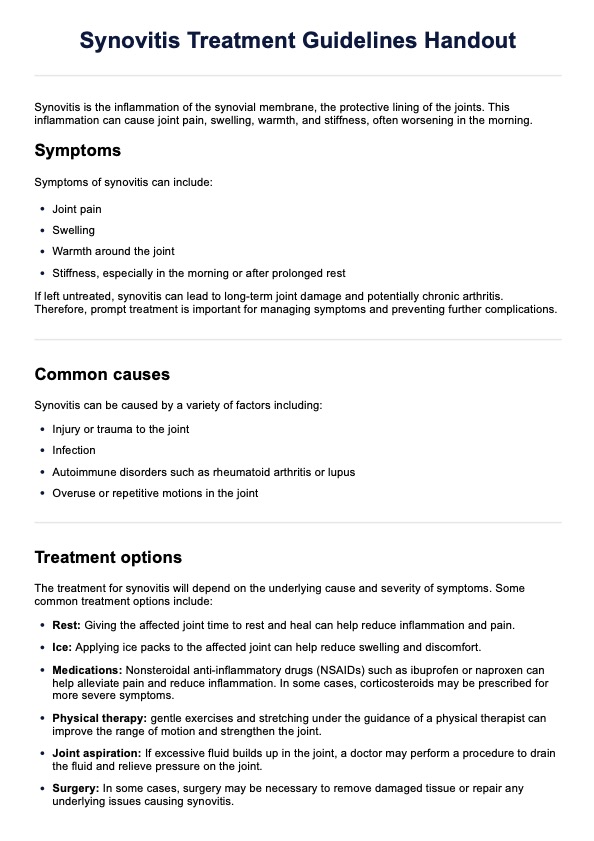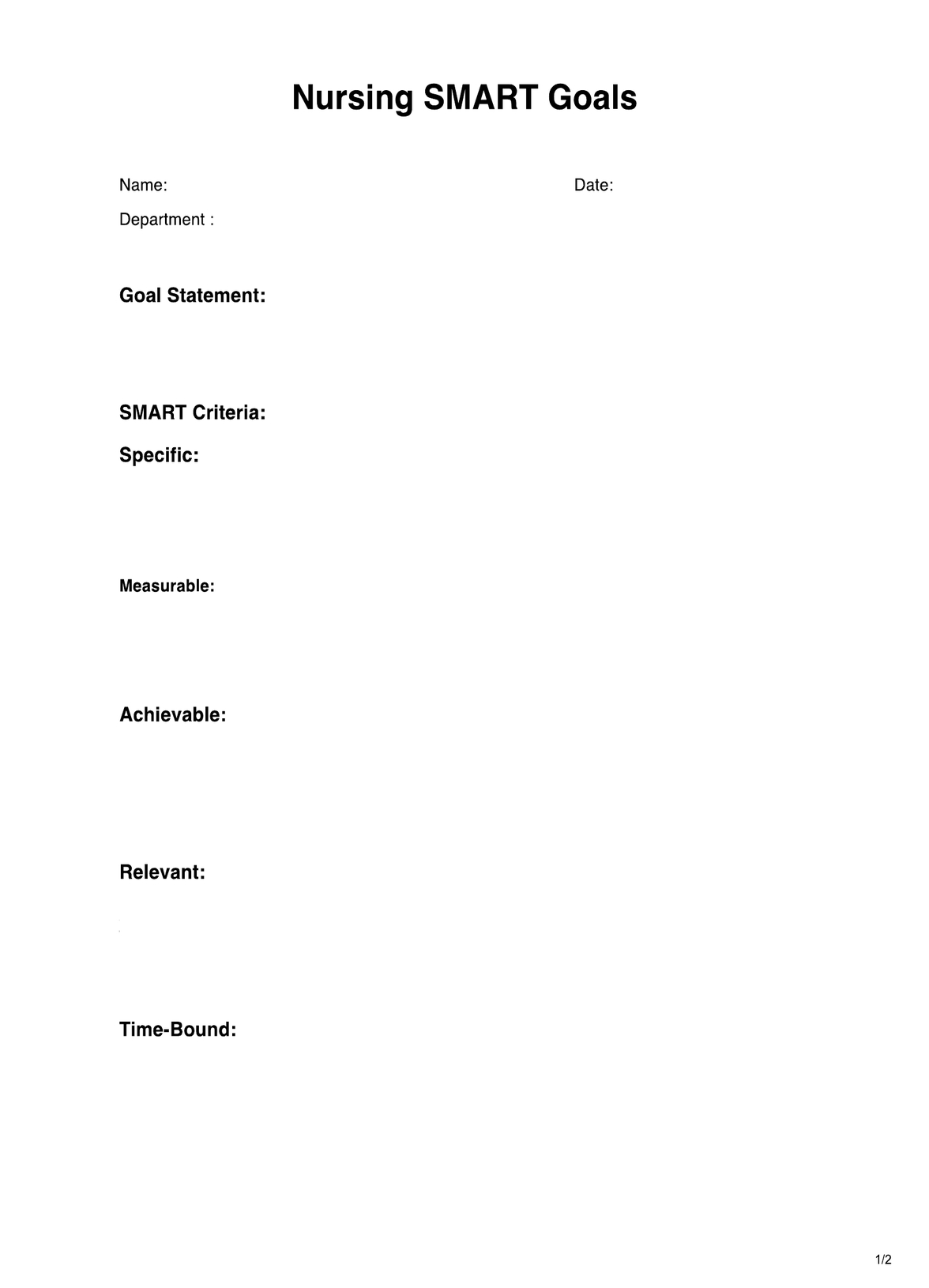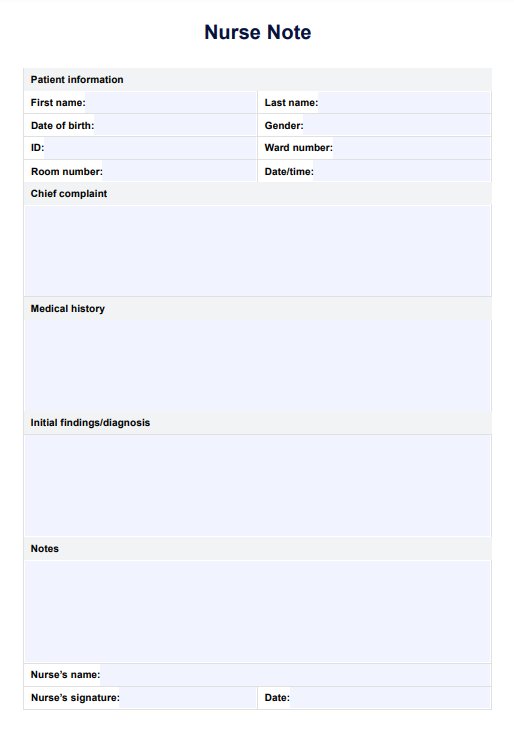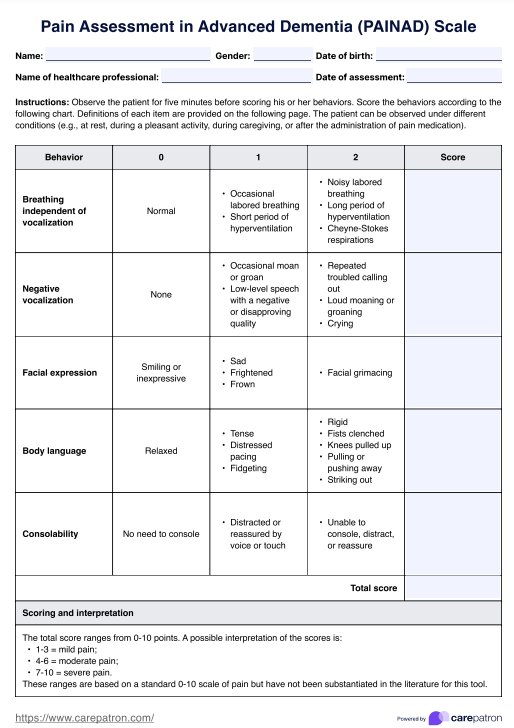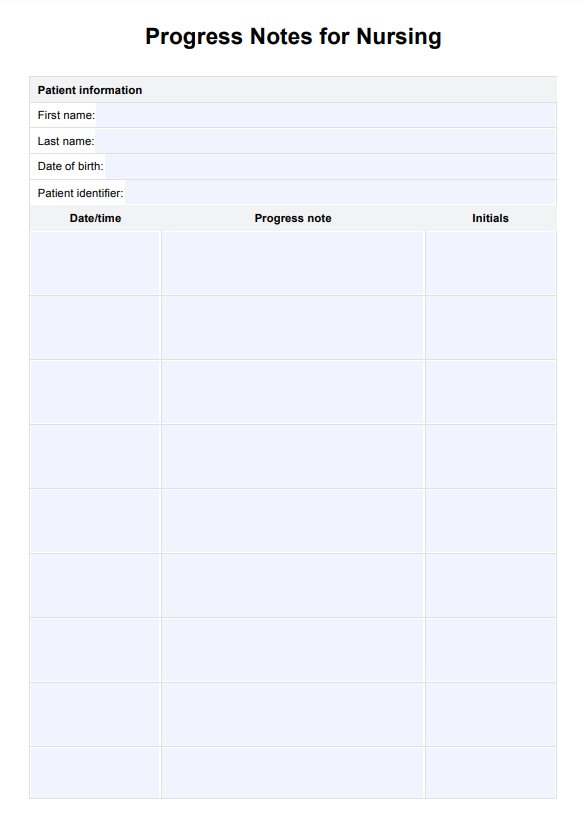Parkinson's Disease Nursing Care Plan
Efficiently manage Parkinson's care with our Parkinson's Disease Nursing Care Plan Template, designed for optimal patient support and outcomes.


What is a Parkinson's Disease Nursing Care Plan Template?
A Parkinson's Disease Nursing Care Plan Template is an essential tool in nursing care, specifically tailored for patients with Parkinson's disease. This progressive neurodegenerative disorder, characterized by hallmark symptoms like tremors, rigidity, and bradykinesia, along with non-motor symptoms such as cognitive impairment or changes, mood disorders, and sleep disturbances, poses complex care challenges. The template helps nurses, guiding them through the intricacies of managing and mitigating the effects of this condition.
The care plan template begins with an in-depth patient assessment, evaluating the disease's physical manifestations and psychological impact. The assessment includes an examination of motor symptoms, cognitive function, emotional state, and the patient's ability to perform daily activities.
From this assessment, specific nursing diagnoses are identified, pinpointing areas such as impaired mobility, risk of falls, or potential for depression. These diagnoses form the basis of a personalized care plan, outlining goals and strategies tailored to the individual's needs.
An effective nursing care plan for Parkison's should include medication management to control symptoms, speech therapy, physical therapy to enhance mobility, strategies for fall prevention, and emotional support for mental health issues. Nutritional guidance, patient and family education, and coping strategies are also integral to the plan.
Ongoing evaluation is also critical to the plan, ensuring the care plan remains responsive to the patient's changing needs. Adjustments should also be made based on the patient's response to treatment, progression of the disease, and evolving care requirements, ensuring a dynamic and effective approach to managing Parkinson's disease.
Parkinson's Disease Nursing Care Plan Template
Parkinson's Disease Nursing Care Plan Example
How does it work?
Using the template is easy. Here's how to incorporate it into your practice:
Step 1: Download the template
Download our Parkinson's Disease Nursing Care Plan Template. You can download the PDF version or print one if you want to have a hard copy. You can also obtain the template through our templates library if you have a Carepatron account.
Step 2: Patient assessment
Conduct a thorough neurological assessment to document motor and non-motor symptoms. Evaluate daily living activities (ADLs) and cognitive changes to understand the full impact of the disease on the patient.
Step 3: Nursing diagnosis for Parkinson's disease
Use the assessment data to identify specific nursing diagnoses related to Parkinson's disease. These might include diagnoses such as impaired physical mobility, fall risk, and impaired verbal communication.
Step 4: Goal setting
Based on the Parkinson's disease nursing diagnosis, develop individualized care goals focusing on managing symptoms, improving functional abilities, and enhancing the patient's quality of life. Goals should be realistic, measurable, and patient-centered.
Step 5: Interventions and rationale
Implement a range of tailored interventions. These could include administering and monitoring medications, providing physical therapy exercises to improve mobility and balance, implementing fall prevention strategies, and offering psychological support to address mental health issues. Consider whether a speech therapist or physical therapist is needed.
Step 5: Evaluation
Regularly review and assess the effectiveness of the care plan. Evaluate the patient's progress toward the goals and adjust the plan to respond to the patient's evolving condition and needs.
When would you use this template?
The Parkinson's Disease Nursing Care Plan Template is a vital resource across various healthcare environments, each with unique patient care demands. Its utilization spans from early stages of the disease, where the focus might be on maintaining independence and managing initial symptoms, to advanced stages, where care needs become more complex.
- Long-term care facilities: In these settings, the template is instrumental in managing the daily care needs of residents with Parkinson's, addressing mobility, nutrition, and safety concerns.
- Neurological units: The template is crucial for post-diagnosis care planning, including medication management and coordination of physical and occupational therapy.
- Community health settings: Community nurses or home health care providers use the template to support patients living at home, focusing on education, safety, and quality of life.
- Rehabilitation centers: These facilities focus on intensive therapy to enhance mobility and manage symptoms, with the template guiding interdisciplinary care.
- Hospice care: At this stage, the care plan shifts towards palliative care, focusing on comfort and support for patients and families.
Benefits of using this care plan
The benefits of our Free Parkinson's Disease Nursing Care Plan template indicate how effectively the nursing interventions address the complex needs of patients with Parkinson's disease. These multifaceted outcomes reflect physical, psychological, and overall quality of life improvements.
Enhanced mobility and reduced falls
Improving mobility and decreasing fall incidents suggest that physical interventions, such as strength and balance exercises, are effective. This enhancement in mobility directly impacts the patient's ability to perform daily activities and maintain independence.
Improved psychological well-being of Parkinson's disease patients
Effective management of psychological symptoms, including depression and anxiety, is crucial. Positive changes in this area, often achieved through medication, counseling, and support groups, signify a better quality of life and emotional health.
Better symptom management
Reduction in primary Parkinson's symptoms like tremors, rigidity, and bradykinesia indicates successful medication management and the use of appropriate non-pharmacological therapies.
Increased patient and caregiver satisfaction
Feedback from patients and their caregivers on the effectiveness of the care plan is a vital outcome. It reflects how well the plan addresses the unique needs and improves patients' and caregivers' daily living experiences.
Enhanced quality of life
Overall, the ultimate goal of the nursing care plan is to enhance the patient's quality of life. This includes maintaining as much independence as possible and a sense of well-being and dignity despite disease progression.
Commonly asked questions
To create this template, include sections for assessment, nursing diagnosis for Parkinson's disease, care planning goals, interventions, and evaluation tailored to the specific needs of Parkinson's disease patients.
Parkinson's Disease Nursing Care Plan Templates are used in managing care for patients with Parkinson's disease, from early diagnosis to advanced stages, in various healthcare settings.
Nurses use Parkinson's Disease Nursing Care Plan Templates to systematically assess, plan, implement, and evaluate care specific to the needs of Parkinson's disease patients.
Parkinson's Disease Nursing Care Plan Templates are typically created by nursing professionals with neurology and chronic disease management expertise.


